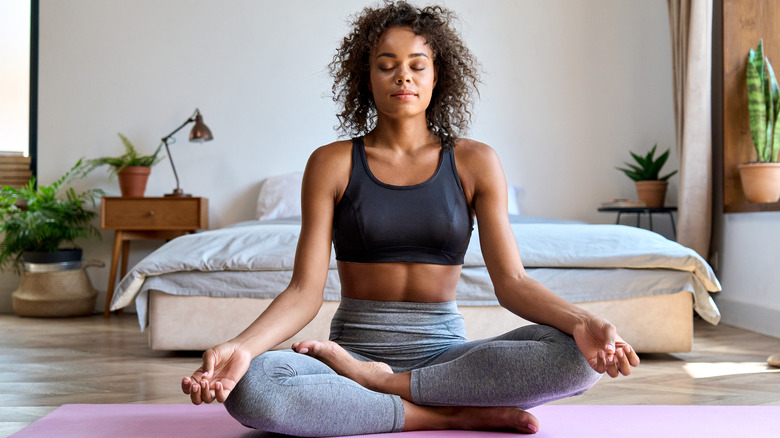How To Practice Meditation If You Can't Sit Still
Meditation is an ancient practice of stilling the mind and concentrating attention on the present moment, and it has become more mainstream in recent years, as per Verywell Mind. Although there are different types of meditation, most involve sitting in a quiet space and directing the mind away from thought wandering.
Practicing meditation has been shown to provide a host of benefits. A 2014 systematic review published in JAMA Internal Medicine found that among these benefits is a reduction in stress levels. Another 2013 study published in Brain, Behavior, and Immunity also looked at the effects of meditation on stress. The results suggested that it can reduce the inflammation caused by an increase in the stress hormone, cortisol.
The benefits don't stop there. Meditation can positively benefit cognitive processes, including lengthening attention span. A 2019 study published in Behavioural Brain Research indicated that even short periods of practice — specifically 13 minutes on a daily basis — can improve both attention and memory after two months. For those dealing with depression and anxiety, meditation can also reduce symptoms. A 2014 systematic review published in Psychosomatics indicated that meditation therapy had a significant reduction in depression symptoms.
Despite the many benefits associated with meditation, some people may find it difficult to sit still and engage in the practice. If this is you, the good news is that there isn't just one right way to meditate. One type of meditation called movement meditation may be the key to a fulfilling and successful practice.
Movement meditation doesn't require stillness
Imagine being able to still your mind and reap the benefits of meditation without forcing yourself to stay in one position for an extended period of time. Enter movement meditation, a practice that will allow you to feel more grounded and centered physically, emotionally, and mentally without sitting still, as per Well+Good. The key to movement meditation is that you enter a mindful state while carrying out any number of activities, whether going for a walk in your neighborhood, cooking dinner, or making art.
Walking meditation is one popular way to incorporate movement meditation into your day (per Well+Good). "Every time I step out the door to walk my dog, I could be on my phone," yoga instructor Claire Baum told Well+Good. "Or, I can put my phone away and notice my footfalls, the sensation of my feet meeting the ground, notice the trees in motion, notice the colors I see." The idea is to turn away from distractions and thoughts and tune into the senses as you go about your walk.
The American Institute of Health Care Professionals outlines a different way to practice movement meditation. This involves finding a quiet, undisturbed location and engaging in simple movements, such as reaching your arms over your head or twisting your upper body. You can move as much or as little as you want, always taking care to attend to the sensorial experience instead of any thoughts that may emerge.


